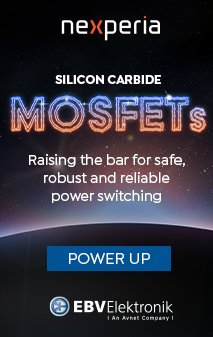How feasible is the All Electric Society, and what will it require to achieve? We discussed this with Karl Lehnhoff, Director of the Industrial, Scientific, and Medical segment at EBV Elektronik.
The land doesn’t belong to me. It’s only on loan from my children.” This wisdom from his grandfather, a farmer, still drives Karl Lehnhoff today. Accordingly, he is fascinated by the concept of the All Electric Society, which he has been advancing for more than two years as Director of the Industrial, Scientific, and Medical market segment at EBV. He sees it as an opportunity to create a cleaner and better world – not only for today’s generation but, above all, for future generations.
How realistic do you think it is that the All Electric Society will come to pass?
Karl Lehnhoff: It’s quite realistic. From a technological point of view, all the necessary solutions are available today. We may need to work on the economics and political conditions. In the European Union, we already have several regulations for more sustainability, and now we need to translate them into national laws.
What will it take to convince consumers?
K. L.: Consumers are aware of the environmental point of view, but we need to explain what needs to change and how it needs to change. And what the economic impact would be. Then it will be easier to convince consumers. This is something our politicians have to do. Consumers are not stupid. If you explain it in the right way, they will understand.
What technologies are still needed to make an All Electric Society a reality?
K. L.: We more or less have all the technology. What we need to do is combine renewable energy sources with energy storage solutions. The backbone of all this is digitalisation. You can call it IoT, but at the end of the day, it is communication between the different devices of the energy ecosystem.
What is the best way to bring the many different components and areas of the All Electric Society together?
K. L.: It requires a systematic and integrated approach. At EBV, we can help with this on both a system and technology level. We support our customers in selecting components and integrating individual solutions into a complete system. We are members of various associations to identify technology trends early and understand the future paths.
And what’s the role of electronics in the realisation of the All Electric Society?
K. L.: Electronics are at the heart of many solutions for the All Electric Society. Think of power electronics, all the intelligence to control the systems, and communication interfaces. Hardware and software make monitoring, control, and integration possible.
Sector coupling is a key part of the All Electric Society, where we’re connecting energy with industry, transportation, and buildings. These are all areas that EBV is involved in. Does this interconnection make your job easier?
K. L.: That was one of the aims of our structure. We have a much deeper knowledge of the market and can support the customer much better. On the other hand, we have technology segments, so we can support the customer with in-depth knowledge of the many specialised technologies. With this vertical approach between market and technology, we can ensure that our customers’ innovative products have the latest technology and are ready for the latest market trends.
What role does energy efficiency play in all these considerations? What can the semiconductor industry contribute?
K. L.: Energy efficiency is very important – energy that you don’t waste, you don’t have to generate. From a technology perspective, this is the driver for wide-bandgap semiconductors. Silicon carbide and gallium nitride transistors will increase efficiency, reduce losses, and therefore gain market share.
However, another interesting technical development is taking place: the shift from an AC to a DC grid. In the past, electricity was generated, distributed, and used in alternating current. But today, photovoltaic systems generate direct current and feed it into the grid. With the existing grid, we have to convert the power to AC for transport, and then convert it back to DC for use. Does that make sense? No, it does not! Especially if you include the storage system, which typically works with DC. A DC grid reduces the losses caused by converting energy between AC and DC and vice versa.
How do you see the world in 20 to 30 years when the concept of the All Electric Society has been successfully implemented?
K. L.: The world will be a much cleaner place with less CO2 in the atmosphere. It will be more efficient, and I think it will be more technology-based. Maybe we will discover additional renewable energy sources. Our lifestyle will be much more sustainable and environmentally friendly. And perhaps we will have moved Earth Overshoot Day from spring to autumn.



